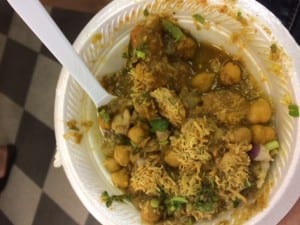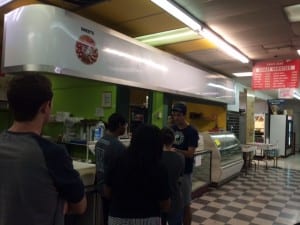I remember when I used to visit Taj Mahal Imports (Taj from now on) as a kid, not when I lived in Dallas, Texas, but back when I lived in Tulsa, Oklahoma. I had family in Dallas, so we would drive down often, but we would always make it a point to stop at Taj to buy groceries and eat chaat before our drive back. The quality of Indian food here was much better than what we could find in Tulsa, so my family would literally buy food in bulk to last us for at least a couple of months (and enough rice to last us upwards of 6 months!). When I was a kid, Taj was similar to Vik’s Distributors in Berkeley but instead for North Texas and the surrounding states. Thinking back on it now, it has a special place in my life. To a kid growing up in Tulsa, a city with a small Indian diaspora, Taj represented a much more thriving Indian-American culture in a nearby major city. It was almost like stepping into India without actually going there. More importantly though, this was where I remember having chaat for the first time!
When we moved to Plano in 2006, we would still frequent this store often. Back then, the store was twice as big and literally every other store in the entire plaza and the plaza across the street (colloquially known as Little India) was some kind of Indian store, a literal real-world example of the “place-making” phenomenon Sen refers to in his article. Indian clothing, multiple Indian restaurants from different states and cuisines, Indian movie stores, small chaat houses, and small grocery stores were all packed into this area, but Taj was still the main supermarket in this area. Most Indians on the Dallas side of the metroplex would probably stop by Taj at least once every two months. The thing is, there were small Indian grocery stores scattered around everywhere in the metroplex, but for the big things most people would probably go to Taj, get stuff in bulk, eat some chaat, and go home. Taj was the Wal-Mart or Sam’s Club/Costco of the Indian community and it helped that it had some really good chaat too.
However, since then, as more South Asians moved into Dallas, they frequently settled further and further away from Richardson and stayed in Plano, Frisco, Allen, Coppell, or Irving. As more people moved there, new stores started opening up in these areas that served the same function that Taj used to serve. There are now 2 stores just as big as Taj a few miles from my house in Plano and both have full-fledged restaurants in them too along with chaat stores. They’re like the one-stop shop for everything Indian you need, and reading the article on Vik’s by Arijit Sen essentially sums up everything these stores function as in various parts of the Dallas metroplex. As more of these stores started opening up with some stores solely specializing in chaat, Taj couldn’t keep up, the quality of chaat started decreasing, and its surrounding stores started running out of business. Many of the other stores in Little India aren’t Indian anymore because most of them ran out of business completely, but at least Taj is still around as a sort of relic from a time long gone.
I personally hadn’t been to Taj in probably 5 years before this field trip. Going back to Taj this past Tuesday just hit me with a wave of nostalgia and a tinge of sadness that this bustling store I remember from my childhood was now half its former size and many of the restaurants that I used to go to were now gone. Still, the prospect of introducing this tasty Indian street food to my classmates and eating some chaat myself is what I was really excited about. I had some pani puri and some aloo tikki, and got two of my more adventurous classmates to try pani puri too. I prefaced it by telling them the significance that chaat holds in Indian culture like the fact that people often have rounds of chaat and competitions to see who can eat more, a fact that Sen mentioned in his article too. I also told them that it’s probably nothing like they’ve ever had before, and I’m sure they would agree, but I really hope they liked it. It seemed like they did at least, because I definitely enjoyed introducing it to them.
I had personally heard that the Taj chaat house has recently not been up to standard, but I would disagree after what I had Tuesday. I would have probably had more if I had time, and I will probably go again soon to try the Taj chaat again. Going to Taj was a nice moment of nostalgia for me, and I really liked that a lot of other people got introduced to this really tasty and lesser-known Indian street food (and hopefully they’ll introduce it to their friends too!). Maybe in the future, even street food in the U.S. will include chaat because a lot of my peers seemed to like it. But for now, I really hope Taj Mahal Imports stays in business because honestly for me, it would be hard to picture the west side of the Belt Line and 75 intersection without Taj Mahal Imports and Little India.



